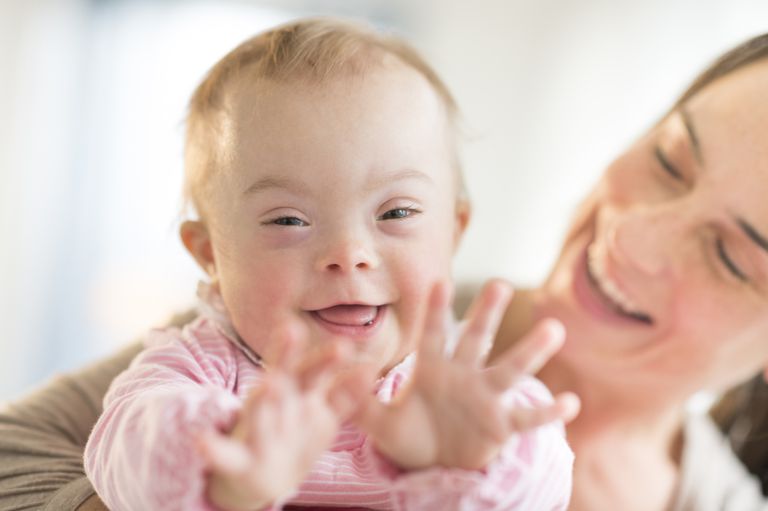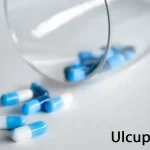
The term trisomy is utilized to portray the nearness of three chromosomes, as opposed to the typical coordinated pair of chromosomes. For instance, if an infant is brought into the world with three #21 chromosomes, as opposed to the typical pair, at that point the infant would be said to have “trisomy 21.” Trisomy 21 is otherwise called Down disorder. Different instances of trisomy incorporate disorders like trisomy 18 and trisomy 13. Once more, trisomy 18 or trisomy 13 essentially methods the kid has three duplicates of the #18 chromosome (or of the #13 chromosome) present in every cell of the body, as opposed to the standard pair.
What is Down disorder?
متلازمة الداون is a hereditary issue that includes birth deserts, scholarly inabilities, trademark facial highlights. Also, it regularly includes heart abandons, visual and hearing hindrances, and other medical issues. The seriousness of these issues changes incredibly among influenced people. Down disorder is a standout amongst the most widely recognized hereditary birth abandons, influencing roughly one in around 800 children. In this nation, around 250,000 people have Down disorder. The future among grown-ups with Down disorder is around 60 years, however normal life expectancy shifts.
The term Down disorder originates from Dr. Langdon Down, the specialist who previously portrayed the gathering of physical indications in 1866. It was not until 1959 that the reason for Down disorder (the nearness of an additional #21 chromosome) was distinguished.
What causes Down disorder?
Typically in شذوذ الجينات, the egg cell of the mother and the sperm cell of the dad begin with the standard number of 46 chromosomes. The egg and sperm cells both experience a cell division in which the 46 chromosomes are isolated into equal parts, with the goal that both the egg and the sperm cells will have 23 chromosomes each. At the point when a sperm with 23 chromosomes treats an egg with 23 chromosomes, the infant will have a total arrangement of 46 chromosomes, half from the dad and half from the mother.
At times, a mistake happens when the 46 chromosomes are being partitioned fifty-fifty, and an egg or sperm cell keeps the two duplicates of the #21 chromosome rather than only one duplicate. In the event that this egg or sperm is treated, at that point the child will have three duplicates of the #21 chromosome, which is called trisomy 21, or Down disorder. The highlights of Down disorder are brought about by that additional duplicate of chromosome #21 being in each cell in the body.
Most instances of Down disorder are brought about by trisomy 21. Sometimes, the additional chromosome #21 or a bit of it is connected to another chromosome in the egg or sperm; this may cause “translocation Down disorder.” This is the main type of Down disorder that might be acquired from a parent. A few guardians have a revamp called a decent translocation, in which the #21 chromosome is connected to another chromosome, however it doesn’t influence their own wellbeing. Once in a while, another structure called “mosaic Down disorder” may happen when a blunder in cell division occurs after preparation. These people have a few cells with an additional chromosome #21 (47 chromosomes aggregate), and different cells have the standard number (46 complete).

What does a tyke with Down disorder resemble?
Photograph of a tyke with Down disorder
A tyke with Down disorder may have eyes that incline upward and little ears that may crease over somewhat at the best. The kid’s mouth might be little, influencing the tongue to seem huge. The youngster’s nose likewise might be little, with a leveled nasal extension. A few children with Down disorder have a short neck and little hands with short fingers. As opposed to having three “wrinkles” in the palm of the hand, a tyke with Down disorder more often than not has one single wrinkle that goes straight over the palm, and a second wrinkle that bends somewhere around the thumb. The youngster or grown-up with Down disorder is frequently short and has strange detachment of the joints. Most kids with Down disorder will have a few, yet not all, of these highlights.
What kinds of medical issues do youngsters with Down disorder commonly have?
About portion of infants with Down disorder have heart abandons. A few deformities are minor and might be treated with drugs, while others may require medical procedure. All infants with Down disorder ought to be analyzed by a pediatric cardiologist. This is a specialist who spends significant time in heart sicknesses of kids. Infants with Down disorder ought to likewise have an echocardiogram. This is a methodology that assesses the structure and capacity of the heart by utilizing sound waves recorded on an electronic sensor that produce a moving image of the heart and heart valves. This test and test ought to be done in the initial two months of life, with the goal that any heart deformities can be dealt with.
A few children with Down disorder are brought into the world with intestinal contortions that require medical procedure.
Kids with Down disorder are at expanded hazard for visual impedance. Basic visual issues incorporate crossed eyes, close or farsightedness, and waterfalls. Most visual issues can be improved with glasses, medical procedure, or different medications. A pediatric ophthalmologist ought to be counseled inside the primary year of life. This is a specialist who represents considerable authority in complete eye care and gives examinations, conclusion, and treatment for an assortment of eye issue.
Kids with Down disorder may have hearing misfortune as a result of liquid in the center ear, a nerve deformity, or both. All kids with Down disorder ought to have standard vision and hearing examinations so any issues can be treated before they frustrate improvement of language and different aptitudes.
Kids with Down disorder are at expanded hazard for thyroid issues and leukemia. They likewise will in general have numerous colds, just as bronchitis and pneumonia. Youngsters with Down disorder ought to get normal medicinal consideration, including youth vaccinations. The National Down Syndrome Congress distributes a “Preventive Medicine Checklist” that diagrams which checkups and therapeutic tests are prescribed at different ages.
How huge is the level of scholarly incapacity that goes with Down disorder?
The level of scholarly incapacity that goes with Down disorder shifts generally. It ranges from mellow to direct to extreme. Be that as it may, most intelligent incapacity falls inside the mellow to direct range. There is no real way to foresee the psychological advancement of a kid with Down disorder dependent on their physical highlights.
What handicaps does a tyke with Down disorder have?
Kids with Down disorder can more often than not do most things that any youthful kid can do, for example, strolling, talking, dressing, and being latrine prepared. Nonetheless, they by and large do these things later than other youngsters. The definite age that these formative achievements will be accomplished can’t be anticipated. Nonetheless, early mediation programs, starting in earliest stages, can enable these kids to accomplish their individual potential.
Can a kid with Down disorder go to class?
Truly. There are uncommon projects starting in the preschool years to assist youngsters with Down disorder create aptitudes as completely as could reasonably be expected. Alongside profiting by early mediation and specialized curriculum, numerous youngsters can be coordinated into the customary classroom, to some degree. The viewpoint for youngsters with Down disorder is far more brilliant than it used to be. Many will figure out how to peruse and compose and partake in differing youth exercises, both at school and in their neighborhoods. While uncommon work programs are intended for grown-ups with Down disorder, many can hold customary employments. Today, an expanding number of grown-ups with Down disorder live semi-autonomously in local gathering homes. They deal with themselves, take an interest in family errands, create kinships, share in relaxation exercises, and work in their networks.
Will individuals with Down disorder wed?
A few people with Down disorder wed. Despite the fact that there have been uncommon special cases, most men with Down disorder can’t father a kid. In any pregnancy, a lady with Down disorder has a 50/50 shot of imagining a tyke with Down disorder, albeit a large number of the pregnancies are prematurely delivered.
How is Down disorder analyzed?
Since Down disorder has such an interesting gathering of attributes, doctors can some of the time decide if an infant has Down disorder essentially by physical examination. To affirm the physical discoveries, a little blood test can be taken and the chromosomes can be examined to decide the nearness of additional #21 chromosome material. This data is vital in deciding the hazard in future pregnancies. (Translocation Down disorder and mosaic Down disorder have distinctive repeat hazards in future pregnancies).
Chromosomal anomalies, for example, Down disorder can regularly be analyzed before birth by dissecting cells in the amniotic liquid or from the placenta. Fetal ultrasound amid pregnancy can likewise give data about the likelihood of Down disorder, yet ultrasound isn’t 100 percent precise. Numerous infants with Down disorder may appear to be identical on ultrasound as those without Down disorder. A chromosome investigation, regardless of whether performed on a blood test, cells from the amniotic liquid, or placenta, is extremely exact.
What are the maternal age dangers for Down disorder?
The mother’s age at conveyance is the main factor observed to be connected to the danger of having an infant with Down disorder. This hazard increments with consistently, particularly after the mother is 35 years of age. Be that as it may, in light of the fact that more youthful ladies are bound to have babies than more established ladies, most infants with Down disorder are destined to ladies more youthful than 35.
The American College of Obstetricians and Gynecologists suggests that every single pregnant lady, paying little respect to age, be offered screening for Down disorder.
What is the danger of having a second kid with Down disorder?
As a rule, for ladies who have had one tyke with Down disorder, the shot of having another infant with Down disorder relies upon a few elements, for example, the mother’s age. It is vital to realize that most infants with Down disorder are destined to ladies under 35. This is on the grounds that ladies under 35 have a larger number of infants than ladies over.



